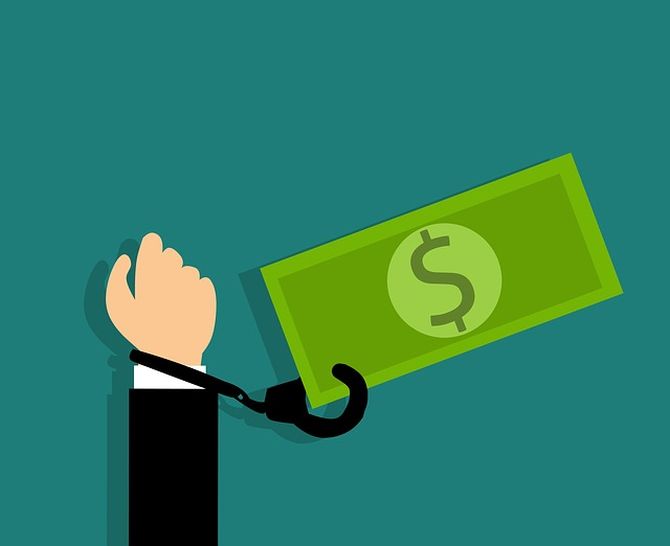The Ultimate Survival Guide: How to Rescue Your Business from the Abyss of Debt
Debt can be a daunting and overwhelming challenge for businesses, regardless of size or industry. Falling into the abyss of debt can threaten the very existence of your business. However, with careful planning, strategic decision-making, and disciplined financial management, you can rescue your business and steer it back to financial stability. This ultimate survival guide will explore essential steps and strategies to help you save your business from the depths of debt.

Assess the Situation
The first step in rescuing your business from debt is to assess the situation comprehensively. Have an understanding of the amount of debt, its sources, and its impact on your business operations. Review your financial statements, outstanding debts, and cash flow projections to determine the severity of the debt crisis. From there, you will know whether you need to look into a business debt relief plan or if you can address the debt issue internally through restructuring and repayment strategies. Analyze the reasons behind debt accumulation, such as overspending, declining sales, or unforeseen expenses, to identify the root causes and prevent future occurrences.
Create a Financial Recovery Plan
Once you comprehensively understand your business’s debt, it’s time to develop a financial recovery plan. This plan should outline specific actions and strategies to address the debt and improve your business’s financial health. Consider the following steps:
a. Prioritize Debt Repayment: Identify and prioritize the debts that require immediate attention. Develop a repayment plan focusing on high-interest debts or those with severe consequences for non-payment.
b. Renegotiate with Creditors: Reach out to your creditors and discuss the possibility of restructuring or modifying repayment terms. Many creditors are willing to work with businesses facing financial difficulties to find mutually beneficial solutions.
c. Cut Expenses: Conduct a thorough review of your business’s expenses and identify areas where you can cut costs. This may involve reducing non-essential spending, renegotiating contracts, or finding more cost-effective alternatives.
d. Improve Cash Flow Management: Implement stringent cash flow management practices, including timely invoicing, offering incentives for early payments, and closely monitoring accounts receivable and payable. Work with an accountant or financial advisor to develop effective cash flow management strategies.
Seek Professional Advice
If you’re unsure what the best course of action is, seek professional advice. Consult with financial advisors, accountants, or business consultants experienced in debt management and business rescue. They can provide valuable insights, guidance, and specific recommendations tailored to your business’s unique circumstances.
Alternatively, you can also consider debt consolidation or refinancing. These options can simplify your debt structure and reduce interest rates. Consolidating multiple debts in a single loan or refinancing existing loans can potentially lower monthly payments and streamline your debt repayment process. Explore options such as business loans, lines of credit, or asset-based financing to consolidate or refinance your debt.
Renegotiate Contracts and Expenses
Contact suppliers, vendors, and service providers to renegotiate contracts and expenses. Many businesses may be willing to work with you in times of financial hardship to find mutually beneficial solutions. Consider negotiating lower prices, extended payment terms, or discounts on bulk purchases. Review your operating expenses and identify areas where you can make cuts or find more cost-effective alternatives. This could include reducing non-essential costs, renegotiating lease agreements, or exploring new vendors that offer better pricing.
Implement a Strict Budget
Creating and sticking to a strict budget is crucial when rescuing your business from debt. Evaluate your cash flow, revenue streams, and expenses to develop a realistic budget that aligns with your current financial situation. Identify areas where you can reduce costs, prioritize necessary expenditures, and set aside funds for debt repayment. You can regain control over your business’s financial health by closely monitoring your finances and adhering to a well-planned budget.
Explore Additional Revenue Streams
Diversifying your revenue streams can provide much-needed relief when dealing with debt. Look for opportunities to expand your product or service offerings, target new markets, or explore partnerships that can generate additional income. Consider launching new products or services that complement your existing offerings or tapping into the digital space by developing an online presence. By diversifying your revenue streams, you can increase your cash flow and accelerate your debt repayment efforts.

Rescuing your business from the abyss of debt requires careful planning, decisive action, and a willingness to explore all available options. By considering debt consolidation or refinancing, renegotiating contracts and expenses, implementing a strict budget, exploring additional revenue streams, negotiating with creditors, seeking professional advice, and staying focused, you can navigate your way out of debt and lay the foundation for a stronger and more resilient business. Remember, overcoming debt challenges is possible with determination, resilience, and a strategic approach to financial management.
